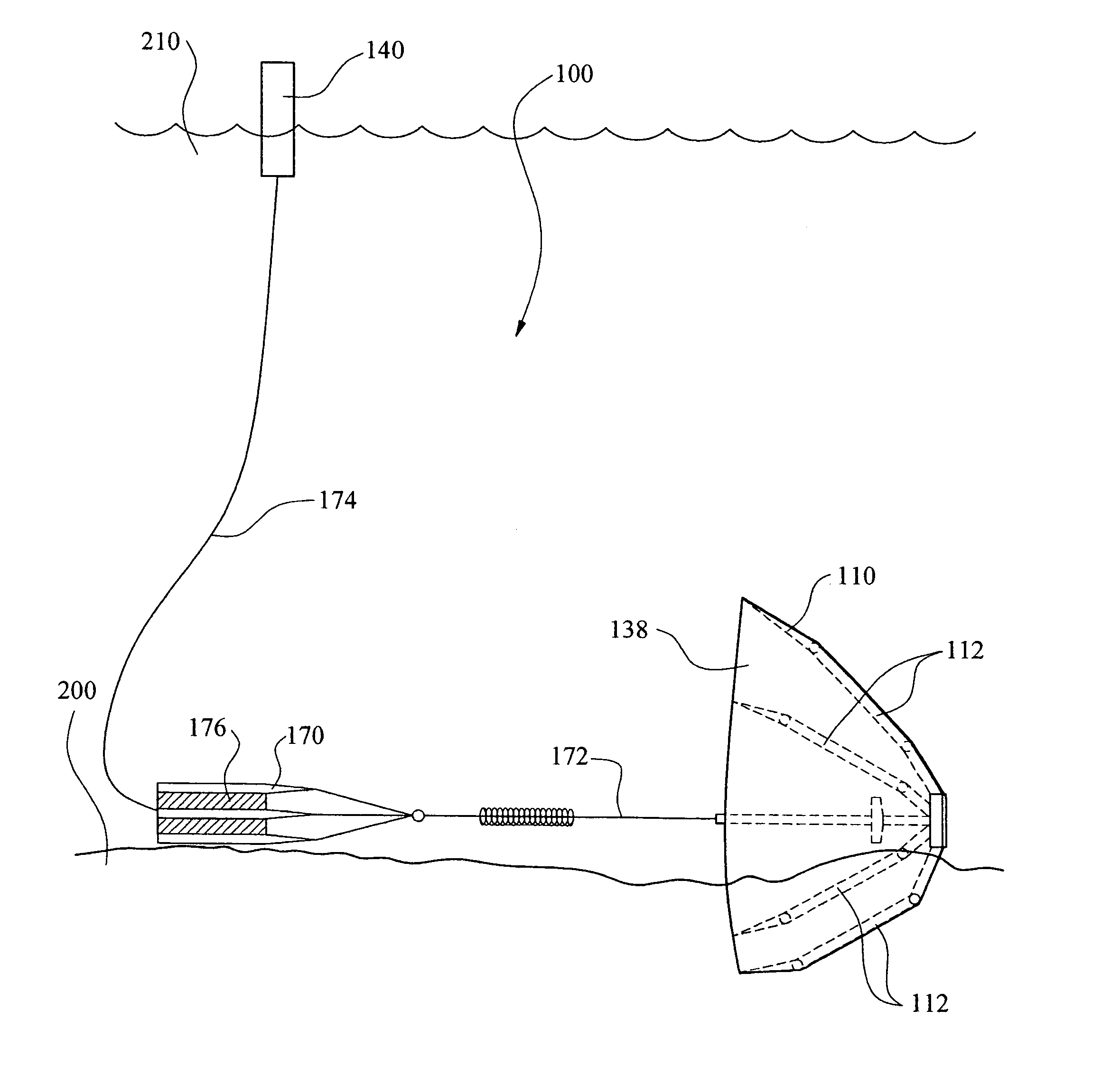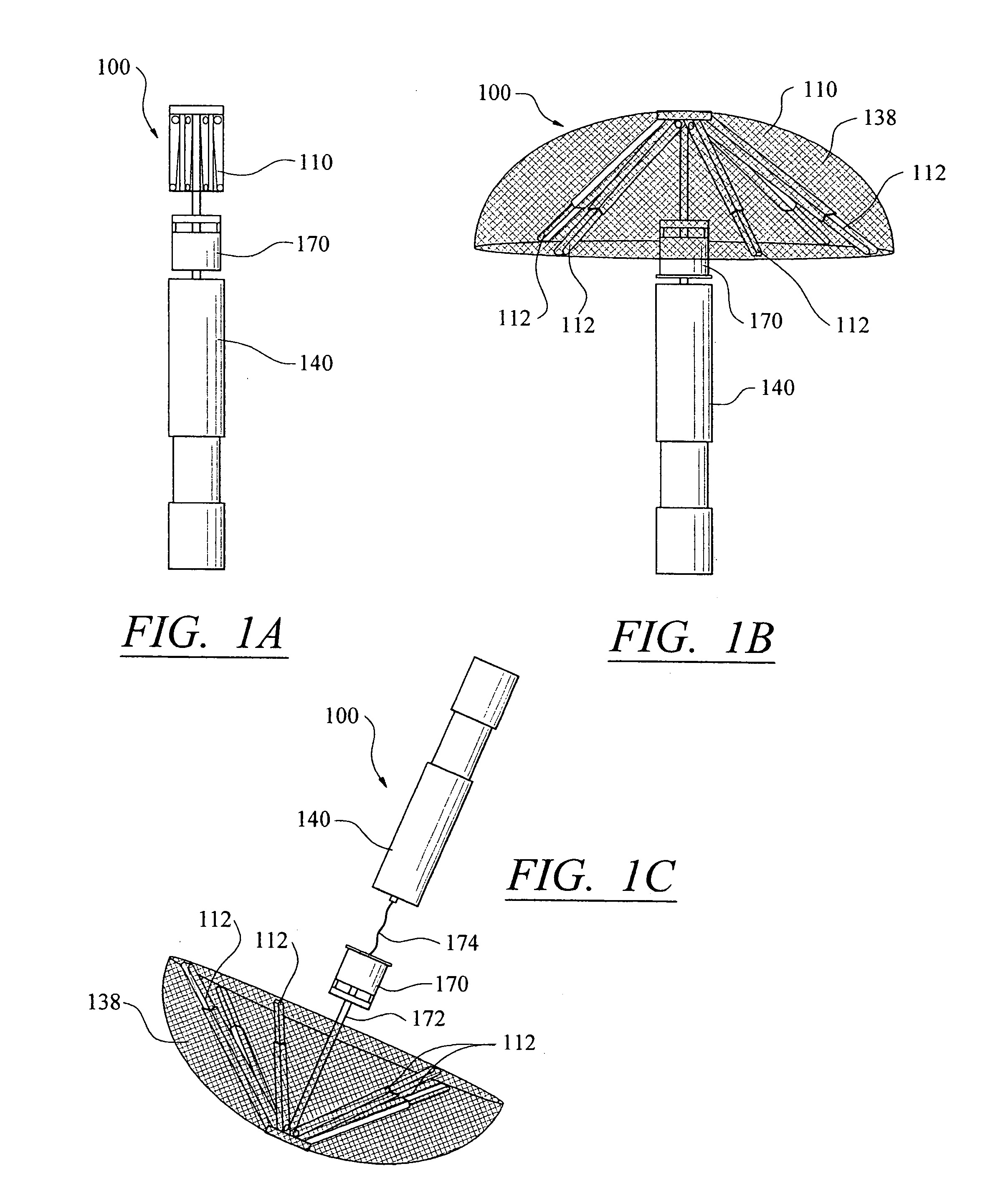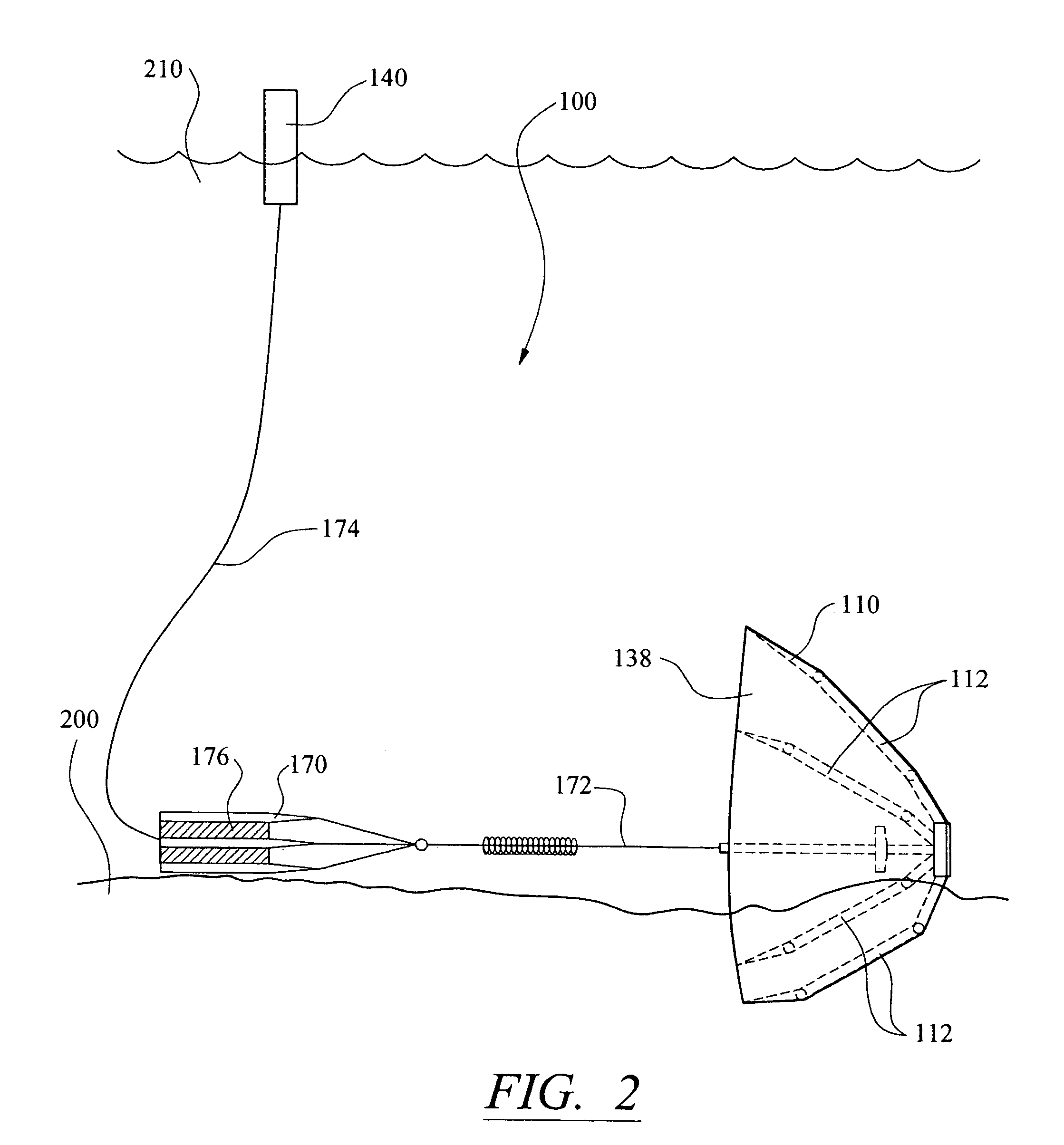Deployable and autonomous mooring system
a mooring system and autonomous technology, applied in special-purpose vessels, anchors, buoys, etc., can solve the problems of impracticality in deployment, use and maintenance of such systems, large systems, and complex environment of optical and acoustic transmission, and achieve the effect of reducing the drag on the buoy
- Summary
- Abstract
- Description
- Claims
- Application Information
AI Technical Summary
Benefits of technology
Problems solved by technology
Method used
Image
Examples
Embodiment Construction
[0035]The present invention is more particularly described in the following description and examples that are intended to be illustrative only since numerous modifications and variations therein will be apparent to those skilled in the art. As used in the specification and in the claims, the singular form “a,”“an,” and “the” may include plural referents unless the context clearly dictates otherwise. Also, as used in the specification and in the claims, the term “comprising” may include the embodiments “consisting of” and “consisting essentially of.”
[0036]The present invention relates to a combination air brake / anchor, mooring system, and buoy packaged in a system that may be designed to conform to the “A-sized” buoy cylinder military standard, and is capable of deployment via air, water or land and / or autonomous mooring. The present invention may be designed such that it is one person portable. As such, the combined anchor, mooring module, and buoy is light enough to be carried by o...
PUM
 Login to View More
Login to View More Abstract
Description
Claims
Application Information
 Login to View More
Login to View More - R&D
- Intellectual Property
- Life Sciences
- Materials
- Tech Scout
- Unparalleled Data Quality
- Higher Quality Content
- 60% Fewer Hallucinations
Browse by: Latest US Patents, China's latest patents, Technical Efficacy Thesaurus, Application Domain, Technology Topic, Popular Technical Reports.
© 2025 PatSnap. All rights reserved.Legal|Privacy policy|Modern Slavery Act Transparency Statement|Sitemap|About US| Contact US: help@patsnap.com



